We were no longer in the extremely biodiverse coastal heathlands, but there were still plenty of flowers to see. Eileen indulged my occasional hops out of the car to see what I could find. For much of the way, though, native plants like this Blind Grass (Stypandra glauca), a member of the daylily family (Hemerocallidaceae), were outnumbered by introduced weeds.
Weeds, of course (whatever their impact on native ecosystems) can be beautiful, as I hope these photos of the ubiquitous Onion Grass or Guildford Grass (Romulea rosea) demonstrate.
The flowers of Four o'Clock, or Largeflower Wood Sorrel (Oxalis purpurea), a native of South Africa, are attractive too...
...and a carpet of Capeweed (Arctotheca calendula), another widespread South African import, can be a spectacular sight.
The road north to Moora took us through peaceful-looking farming country. We made a few non-nature-related stops along the way, but the stop I most enjoyed was at a roadside rest area along the Great Northern Highway not far from Perth, beside a quiet pond south of Lake Chittering.
Here I finally had a chance to find a few Australian dragonflies, insects that had completely eluded me on the rest of our trip (probably because, this early in the spring, it wasn't yet warm enough). Australia has a number of very interesting dragonflies, including several regarded as quite primitive, but only a few have reached the southwest. The two species I found on the stream were members of more widespread genera, with close relatives that I frequently see in Malaysia.
The larger dragonfly was a Blue Skimmer (Orthetrum caledonicum), a widespread species found throughout Australia and ranging to its surrounding islands. It looks very much like some of the blue Orthetrums that are among the commonest and most obvious Malaysian dragonflies.
The smaller species was the Wandering Percher (Diplacodes bipunctata), one of two Australian Diplacodes. This one, which ranges from Indonesia to New Zealand, can be distinguished by the black marks on the side of its abdomen.
As is often the case, the male Wandering Percher is much the brighter-coloured of the two sexes. Note that this mating pair is being hounded by an intruding male (top photo), a common thing in both dragonflies and damselflies.
Sharing a log with the basking dragonflies was a little, dark brown skink, one of the few lizards we saw on the trip. I find skinks very difficult to identify, so this is either a Common Dwarf Skink (Menetia greyii), a common and widespread Australian species, or it isn't. Well, it certainly looks like one to me.
Once I had finished enjoying the pond fauna we headed further north to another stop, where I could turn my attention to the roadside flora -this time, mostly native. Here the common and gorgeous Blue Leschenaultia (Leschenaultia biloba)...
...contrasted with the equally-common red flowers of Coral Vine (Kennedia coccinea).
Once I had finished enjoying the pond fauna we headed further north to another stop, where I could turn my attention to the roadside flora -this time, mostly native. Here the common and gorgeous Blue Leschenaultia (Leschenaultia biloba)...
...contrasted with the equally-common red flowers of Coral Vine (Kennedia coccinea).
Here, too were more flowering peas that I couldn't begin to identify...
...and native buttercups (Hibbertia sp.) that I haven't been able to key out either.
By now we were within the range of a very local flower indeed, the Orange Hibbertia or Orange Guinea Flower (Hibbertia miniata). In the wild it is only found in a tiny area of the wheatbelt between Chittering and Moora. I didn't realize that when I photographed it, but I was certainly struck by its rich colour.
I was particularly delighted to see this Barking Owl (Ninox connivens), a species I have never seen in the wild. This is the "intermediate" species among Australia's three widespread Ninox owls, midway in size between the common Southern Boobook (N. novaehollandiae) and the much larger Powerful Owl (N. strenua).
By now we were getting a little nervous about where we were going to spend the night. Thanks to the Agricultural Fair, every bit of accommodation around Moora was fully booked. We did not want to drive after dark (collisions with kangaroos are so common that rental car insurers in Western Australia will not cover night drivers in rural areas). We were told that there was a caravan park not far to the west in Dandaragan, but it turned out to be intended for (and fully occupied by) local mine workers. However, the owners, Gaylene and Evan, had a trailer that served as staff quarters but was empty that night - and they very kindly let us use it for free, even setting us up with a TV and a movie ('The World's Fastest Indian", a lovely film BTW).
It gave us both a very warm feeling - and we had a better night than I have spent at many a hotel.
I even managed to get on close terms with a lovely male Splendid Fairy-Wren (Malurus splendens) outside our caravan...
By now we were within the range of a very local flower indeed, the Orange Hibbertia or Orange Guinea Flower (Hibbertia miniata). In the wild it is only found in a tiny area of the wheatbelt between Chittering and Moora. I didn't realize that when I photographed it, but I was certainly struck by its rich colour.
Moora, though its population is less than 2,000, is a major wheatbelt centre and the host, each September, of the Moora Agricultural Fair. We were just in time to take it in.
From a natural history point of view you wouldn't expect an agricultural fair to have much to offer, but Moora is in the centre of an Important Bird Area. In recognition of this, a couple of exhibits at the fair were devoted to bird conservation. One urged people to protect the local population of Short-billed Black Cockatoos (Calyptorhynchus brevirostris).
The other was operated by a rescue centre for injured birds of prey, and featured a few of its patients.
This is an Australian, or Nankeen, Kestrel (Falco cenchroides). The peculiar word "Nankeen" refers to the yellowish-brown color of the bird's back and wings -similar to the colour of nankeen, a cotton cloth once manufactured in Nanjing (formerly Nanking), China. The Rufous Night-Heron (Nycticorax caledonicus), another Australian species, was once called the Nankeen Night-Heron for the same reason.
The other was operated by a rescue centre for injured birds of prey, and featured a few of its patients.
This is an Australian, or Nankeen, Kestrel (Falco cenchroides). The peculiar word "Nankeen" refers to the yellowish-brown color of the bird's back and wings -similar to the colour of nankeen, a cotton cloth once manufactured in Nanjing (formerly Nanking), China. The Rufous Night-Heron (Nycticorax caledonicus), another Australian species, was once called the Nankeen Night-Heron for the same reason.
I was particularly delighted to see this Barking Owl (Ninox connivens), a species I have never seen in the wild. This is the "intermediate" species among Australia's three widespread Ninox owls, midway in size between the common Southern Boobook (N. novaehollandiae) and the much larger Powerful Owl (N. strenua).
By now we were getting a little nervous about where we were going to spend the night. Thanks to the Agricultural Fair, every bit of accommodation around Moora was fully booked. We did not want to drive after dark (collisions with kangaroos are so common that rental car insurers in Western Australia will not cover night drivers in rural areas). We were told that there was a caravan park not far to the west in Dandaragan, but it turned out to be intended for (and fully occupied by) local mine workers. However, the owners, Gaylene and Evan, had a trailer that served as staff quarters but was empty that night - and they very kindly let us use it for free, even setting us up with a TV and a movie ('The World's Fastest Indian", a lovely film BTW).
It gave us both a very warm feeling - and we had a better night than I have spent at many a hotel.
I even managed to get on close terms with a lovely male Splendid Fairy-Wren (Malurus splendens) outside our caravan...











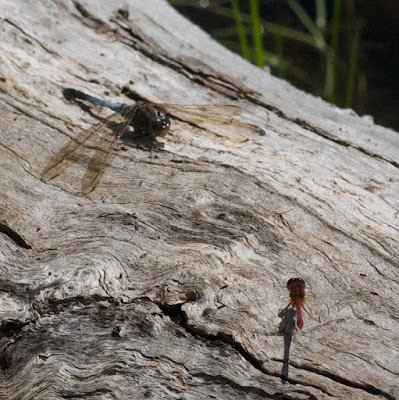
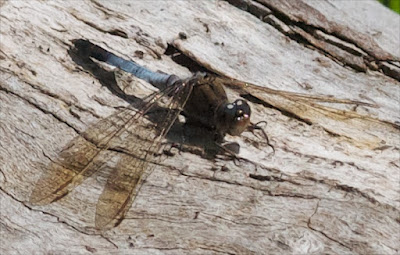
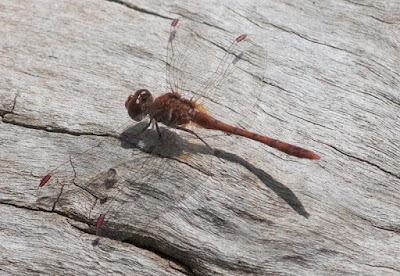
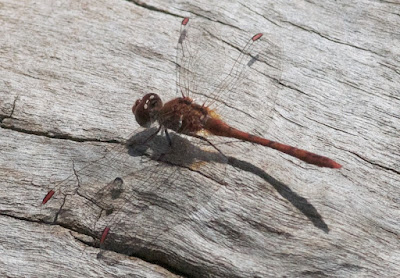





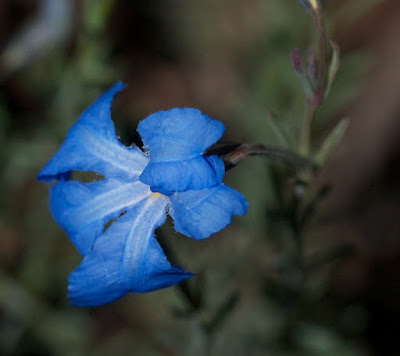

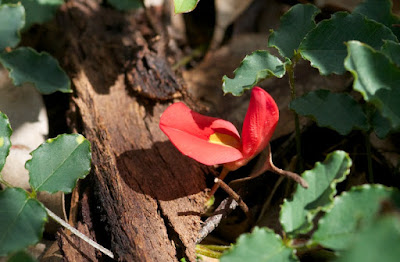


















No comments:
Post a Comment